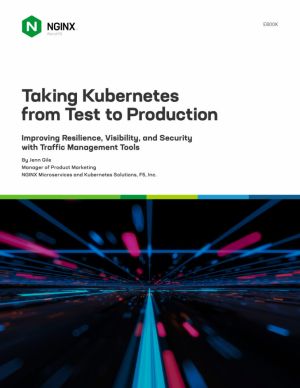Taking Kubernetes from Test to Production
Improving Resilience, Visibility, and Security with Traffic Management Tools
by Jenn Gile
DescriptionTable of ContentsDetailsHashtagsReport an issue
These new traffic management concepts and tools have the power to vastly improve developer experience and accelerate app development and delivery cycles through greater resilience, higher performance, and better security. But when traffic management is overlooked or under-valued, organizations experience problems that make it challenging to attain that value and can even put the organization at risk. To achieve the Kubernetes dream, teams must understand and manage the traffic in a Kubernetes-native way.
This eBook prepares readers for a journey - from test to production - in the land of Kubernetes. Each chapter offers clear and lucid explanations that can inform a Kubernetes strategy and serve as a reference point for managing the flow of traffic proactively and effectively - from POC to canary, and from blue-green to full production. Insight on useful decision frameworks also help in deciding which traffic management solutions work best (or don't) for specific applications and situations. Complete with reference architectures and instantly usable code examples, this eBook can help readers at any Kubernetes skill level expand their knowledge of Kubernetes traffic management tools and concepts.
With its wealth of quick and clear foundational knowledge, this eBook deserves a place on your cloud infrastructure bookshelf and should become a trusted companion in your quest to master Kubernetes. 





Book Description
With Kubernetes came many new concepts, particularly around networking and traffic management. Alongside these new concepts were entirely new classes of tools, designed for ephemeral, containerized, and distributed application deployments. In particular, Ingress controllers and service meshes did not exist prior to the Kubernetes era. Nor were Layer 4 and Layer 7 protocols and traffic typically managed from the same control plane. At a granular level, Kubernetes introduces new complexities around security and management. Simple tasks like load balancing are very different in a realm where infrastructure is 100% ephemeral and often moving constantly - both in terms of setting up new instances with fresh IP addresses and geographically moving around the globe.These new traffic management concepts and tools have the power to vastly improve developer experience and accelerate app development and delivery cycles through greater resilience, higher performance, and better security. But when traffic management is overlooked or under-valued, organizations experience problems that make it challenging to attain that value and can even put the organization at risk. To achieve the Kubernetes dream, teams must understand and manage the traffic in a Kubernetes-native way.
This eBook prepares readers for a journey - from test to production - in the land of Kubernetes. Each chapter offers clear and lucid explanations that can inform a Kubernetes strategy and serve as a reference point for managing the flow of traffic proactively and effectively - from POC to canary, and from blue-green to full production. Insight on useful decision frameworks also help in deciding which traffic management solutions work best (or don't) for specific applications and situations. Complete with reference architectures and instantly usable code examples, this eBook can help readers at any Kubernetes skill level expand their knowledge of Kubernetes traffic management tools and concepts.
With its wealth of quick and clear foundational knowledge, this eBook deserves a place on your cloud infrastructure bookshelf and should become a trusted companion in your quest to master Kubernetes.
This open book is licensed under a Open Publication License (OPL). You can download Taking Kubernetes from Test to Production ebook for free in PDF format (3.3 MB).
Table of Contents
Chapter 1
Reduce Complexity with Production-Grade Kubernetes
Chapter 2
Six Ways to Improve Resilience
Chapter 3
Two Problems You Can Solve with Better Visibility
Chapter 4
Six Methods to Enhance Security
Chapter 5
How to Choose an Ingress Controller - Identify Your Requirements
Chapter 6
How to Choose an Ingress Controller - Risks and Future-Proofing
Chapter 7
How to Choose an Ingress Controller - Open Source vs Default vs Commercial
Chapter 8
How to Choose an Ingress Controller - NGINX Ingress Controller Options
Chapter 9
How to Choose a Service Mesh
Appendix
Performance Testing Three Different NGINX Ingress Controller Options
Book Details
Title
Taking Kubernetes from Test to Production
Subject
Computer Science
Publisher
Nginx
Published
2021
Pages
84
Edition
1
Language
English
PDF Size
3.3 MB
License
Open Publication License
Related Books
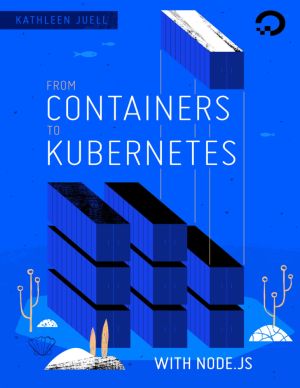
This book is designed as an introduction to containers and Kubernetes by way of Node.js. Containers are the basis for distributed, repeatable workflows with orchestrators such as Kubernetes, and they allow developers and operators to develop applications consistently across environments and deploy in a repeatable and predictable fashion.
The exa...
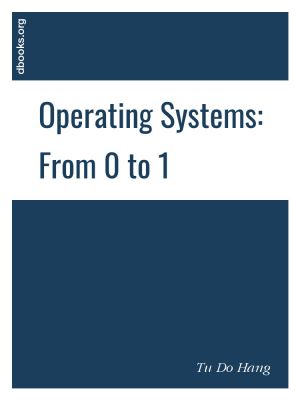
This book helps you gain the foundational knowledge required to write an operating system from scratch. Hence the title, 0 to 1.
After completing this book, at the very least you will learn:
- How to write an operating system from scratch by reading hardware datasheets. In the real world, it works like that. You won't be able to consult Go...
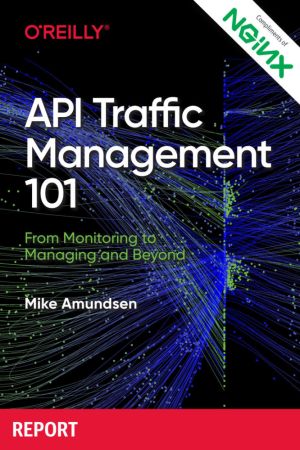
The aim of this short book is to introduce the general themes, challenges, and opportunities in the world of managing API traffic. Most of the examples and recommendations come from my own experience (or that of colleagues) while working with customers, ranging from small local startups to global enterprises.
This book is for those just getting ...
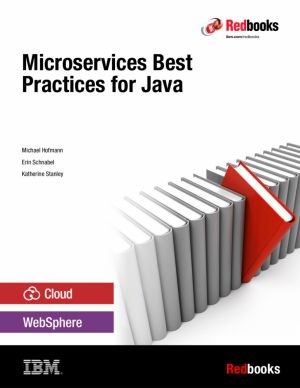
Microservices is an architectural style in which large, complex software applications are composed of one or more smaller services. Each of these microservices focuses on completing one task that represents a small business capability. These microservices can be developed in any programming language. This book covers Microservices best practices fo...

What can the architecture of ancient ships tell us about their capacity to carry cargo or to navigate certain trade routes? How do such insights inform our knowledge of the ancient economies that depended on maritime trade across the Mediterranean?
These and similar questions lie behind Sailing from Polis to Empire, a fascinating insight into th...

The Privacy Engineer's Manifesto: Getting from Policy to Code to QA to Value is the first book of its kind, offering industry-proven solutions that go beyond mere theory and adding lucid perspectives on the challenges and opportunities raised with the emerging "personal" information economy.
The authors, a uniquely skilled team of...

